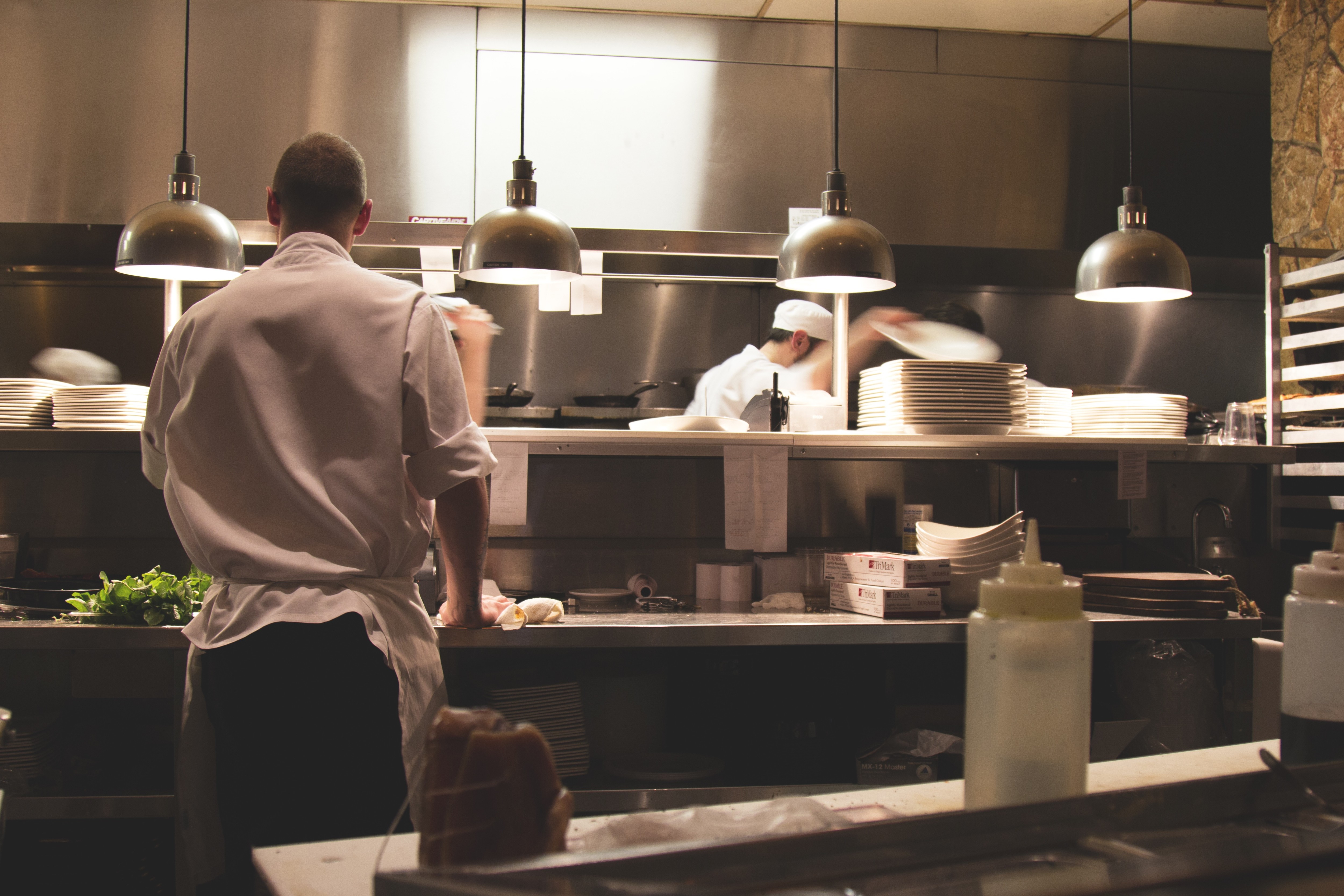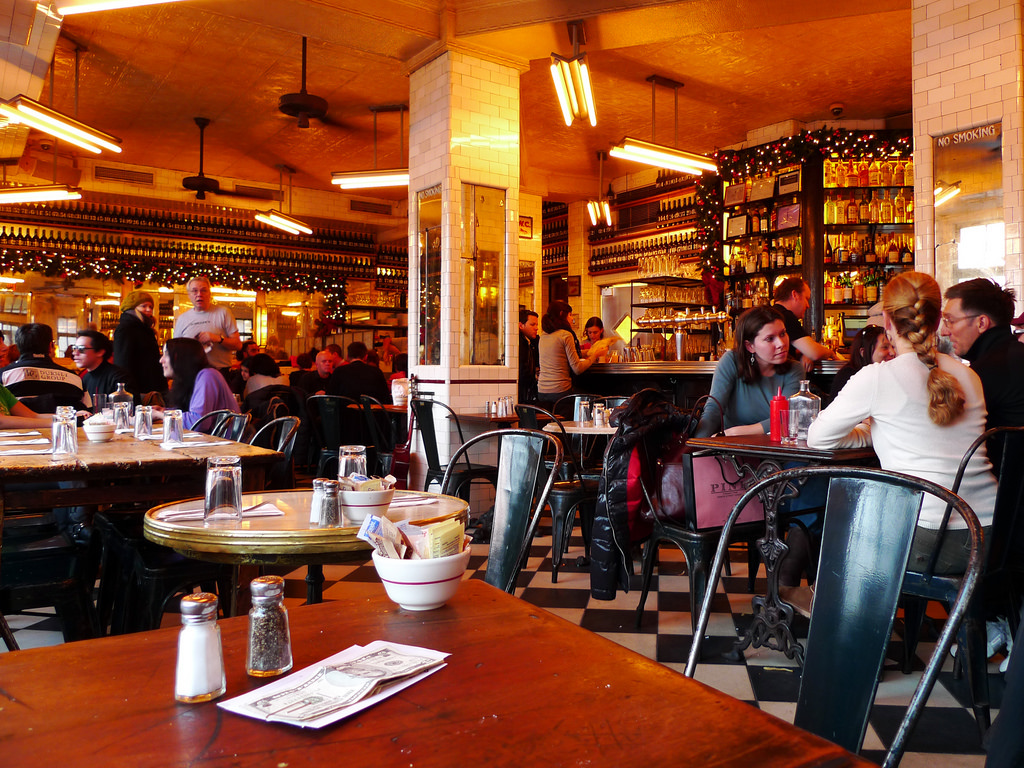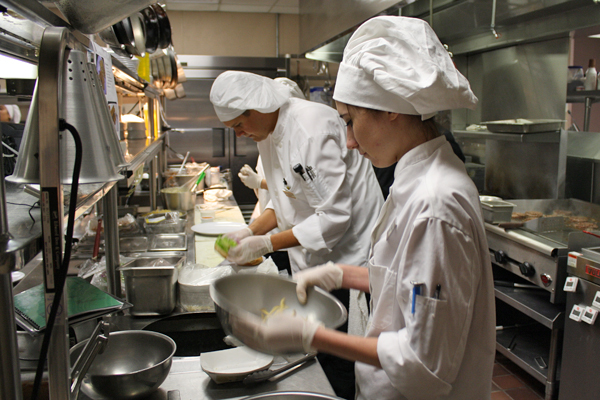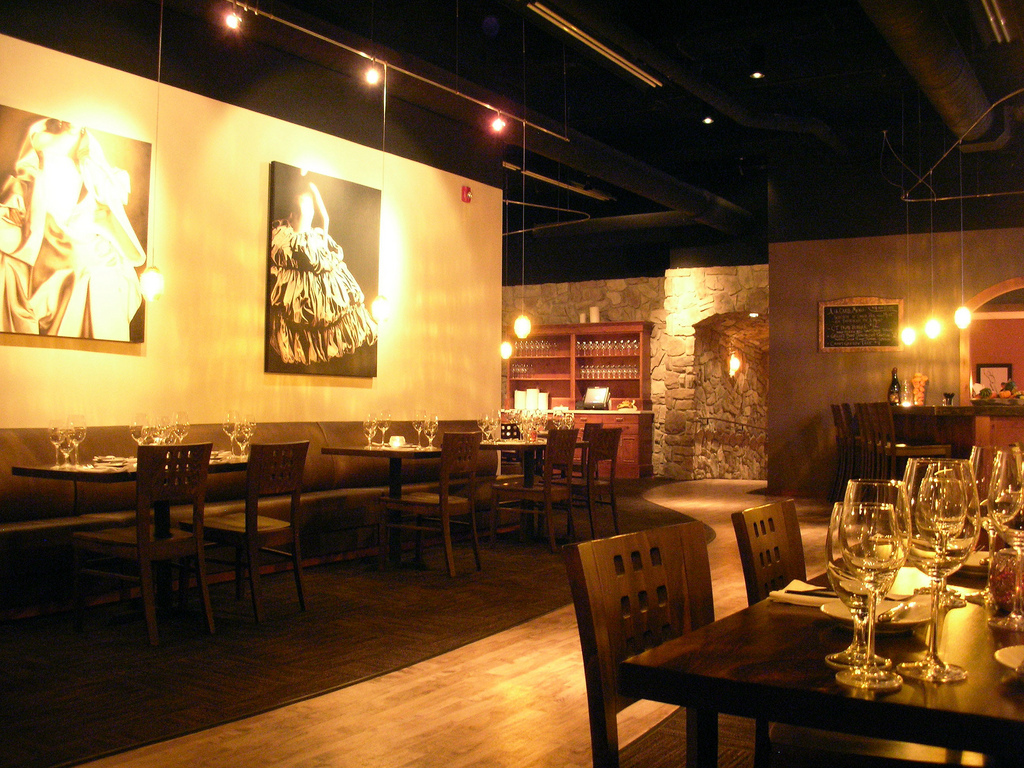When restaurateur Danny Meyer announced that his management company, the Union Square Hospitality Group (USHG), would be doing away with tipping at their restaurants late last year, foodies and restaurateurs alike were shocked. The group is the biggest player by far to adopt this new model, with its thirteen venues rolling out raised prices across the board to cover a fair wage for everyone, from front service to kitchen staff. Meyer modeled his policy after a European standard wherein menu prices are all-inclusive, and in an open letter , he described the practice as necessary to ensure all employees, from servers to dishwashers, chefs to hosts, receive a competitive salary.
Many food critics were immediately onboard, pointing out that American tipping culture has its roots in slavery : kitchen staff and server wages are notoriously low and supplemented by tips because employers did not want to pay emancipated slaves, who were some of the first people in service jobs. Commentators and activists also argue that tipping, as opposed to a standard minimum wage, creates a permanent, mostly female underclass in the food industry . This is especially egregious when, according to the Restaurant Opportunities Center United, nearly 70% of tipped restaurant workers are women. As the fight for a $15 universal minimum wage rages on, fueled primarily by service industry workers like food servers, other major restaurants in New York City followed suit after Meyer including Eleven Madison Park, Annisa, and Tom Colicchio’s flagship spot Craft.
 image via pixabay
image via pixabay
The shaking up of what has been an industry-wide practice for as long as there has been a modern American food industry hasn’t been completely embraced: a major concern has revolved around customers’ sticker shock about prices adjusted to include hospitality . Some wonder if diners will be able to get behind a pre-inflated price in place of deciding their own gratuity amount (or what happens with the tips that some will still feel compelled to give on top of the fixed price). Some smaller and independently-owned restaurant owners have also balked at the idea , claiming this will hit menus with lower-priced items harder than luxury chains like the ones owned by Danny Meyers: a $40 steak becoming a $50 steak isn’t much of a jump at a high-end restaurant, but a $10 burger becoming a $20 burger at a fast-casual chain is, especially for lower-income customers. Naysayers aside, the trend has slowly but surely been sweeping across New York City , San Francisco , and even in hip areas like Austin .
These changes have been slower to hit Los Angeles, but the tides are starting to turn. Barcito , an Argentinian small-plates restaurant owned and managed by Andrea Borgen- who formerly managed USHG restaurant Blue Smoke BPC- is among the first L.A. restaurants to introduce the no-tipping policy. It made the switch a few months after it opened last fall, and a few more eateries have since followed suit: The Bel-Air (formerly Bel Air Bar + Grill ) on North Sepulveda Boulevard, Bar Nine in Culver City, and Alimento in Silver Lake, which has put its own spin on the practice not by doing away with gratuity altogether, but rather adding an additional tip line for kitchen staff in addition to servers .
Bar Nine, a coffee shop that eliminated gratuity last November , opted to raise its prices by roughly 25 to 50 cents on each of its products, while The Bel Air, an upscale American eatery, raised prices by about 20%. On each menu at The Bel Air, the no-tipping policy is boldly written on the top in red, encouraging patrons who feel the need to give extra to donate to a charity affiliated with the restaurant instead.
 image via pixonomy
image via pixonomy
At Barcito, where Borgen has raised the rates roughly 22% to include hospitality (the average customer tips between 15% and 20%, so it appears most restaurants implementing this policy have hovered around this same range), the most expensive item on the menu is a $16 braised short rib dish. For their group menu, the most expensive thing is $41 per guest for 10 plates. A prominent label on both the website and menu state that they are a gratuity-free restaurant, and feedback cards are also given to patrons to reflect about their dining experience as well as the policy.
“For customers, having to do a math problem at the end of what was a great dining experience takes away from it,” Borgen said. “And it also seems unfair to have an entire staff of servers and bartenders dependent on whether or not they do the math problem correctly. That alone has always bothered me. A stranger walking in off the street determines how my staff—who are great—get paid every night.”
In addition to raising prices to cover the included gratuity and a higher base pay/hourly wage for all employees, the new model at Barcito also introduced a concept called “revenue sharing,” wherein sales are added up weekly and revenue is divided evenly between the entire hourly team—not just servers and bartenders.
 image via wikipedia
image via wikipedia
Borgen believes factors like race, gender, and other extraneous details unrelated to a server’s performance can have an unfair impact on tipping, and it also doesn’t sit well with her that, by law, operators are not allowed to share front of house tips with back of house staff (like dishwashers and line cooks). Prior to introducing the no-tipping policy, on a good night at Barcito, servers and bartenders could make upwards of $30 an hour, while the chef preparing the meals could only make $10- because that’s just how the industry works.
“I’ve had customers leave extra tip because they had a great meal, and they don’t understand that, with the old model, the person that made the meal isn’t going to see a dime of that,” she says.
With the new model, Borgen can ensure that all of her staff, regardless of position, make a living wage—one that also allows her to offer them benefits like health insurance. Why, then, has the hospitality-included model been so slow to take off in L.A. as opposed to New York City? Borgen thinks that the cities’ different food cultures as well as distinct labor laws that make change seem daunting and confusing. She recalled a conversation with a fellow operator who asked how much more math she had to do now that all of her employees are making a higher hourly wage that allows for benefits. She replied that without gratuity and using the weekly revenue-sharing model, she actually does less math now than before.
Hospitality Included has been viewed as a major movement in the intense, urban food culture of New York, with the media buzz and trendiness factors attached. Just like the grand opening of the newest hip restaurant on the Lower East Side, the no-tipping policy is a hot topic making waves. In the more laid-back Los Angeles food culture, however, the fight for a $15 minimum wage has dominated much more of the conversation around the food industry, so less people have heard about tip-less policies. And with so few restaurants currently participating, it’s hard for the average diner to grasp exactly what all the fuss is about.
 image via alan light
image via alan light
But Borgen believes that, with the minimum wage increase slowly coming to California in the upcoming years (the first hike occurs this summer, culminating in a universal $15 per hour minimum wage by 2022 ), a new model like this is necessary for the sustenance of the industry.
“The current model isn’t going to work with the wage hikes, and people are going to start going under. I think the people that adopt this model two, three years from now are going to be really pushed by this wage hike. Unless they want to double their prices to cover higher wages, things are going to have to change,” she said. “Even if it’s not this model, people are going to have to start thinking about a different way of doing things.”
Time will tell if Hospitality Included will become the new normal in L.A. as well as across the board in the food industry. But with imminent changes like the raised minimum wage, and many in the industry questioning the integrity of tipping as it stands, it certainly would appear that we are headed towards a massive restructuring of the industry- a tipping point, indeed.
Want more big conversations about the future of Los Angeles’ food scene? Us too. That’s why we’re hosting a whole day of discussions, fireside chats, demos and more, curated with the help of Kelis, for our first-ever Taste Talks Los Angeles . It’s all happening November 4-6 at The Line Hotel— grab your ticket now !










